Lock 11, also known as Briggens, was alongside a weir that helped keep water levels steady for loading and unloading as well as lowering the water for boats to go under the next road bridge to Deeping Gate. Unlike the canal locks, this and the one below on the river, Low Lock, were solid stone block construction - not turf walled.
The weir and the whole of the lock apart from the gates is still in place.
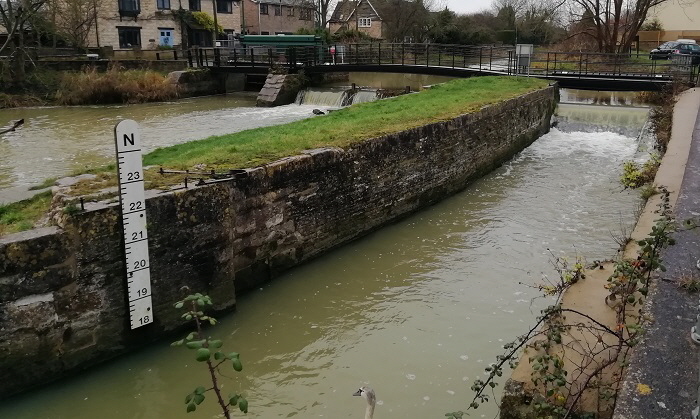
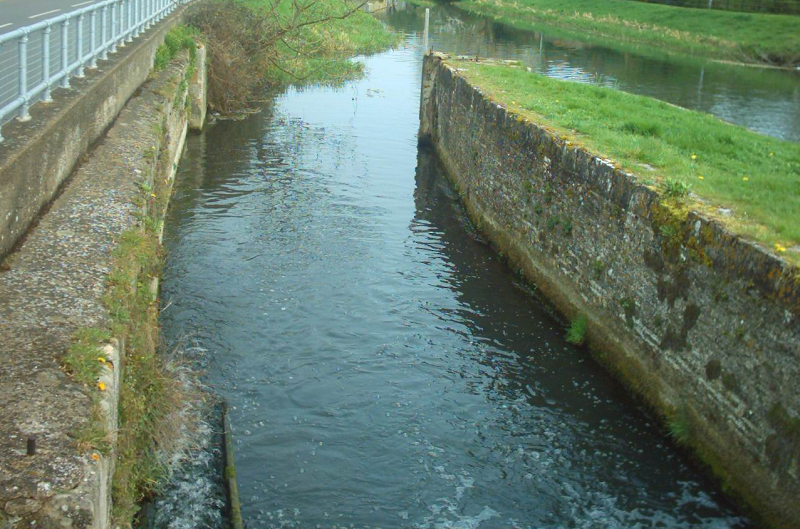
One of the metal rings that the gates turned in is on the top of the lower gate chamber and bolts that held the other gates are still visible at the top end. The metal ring is behind the white water level board shown above.
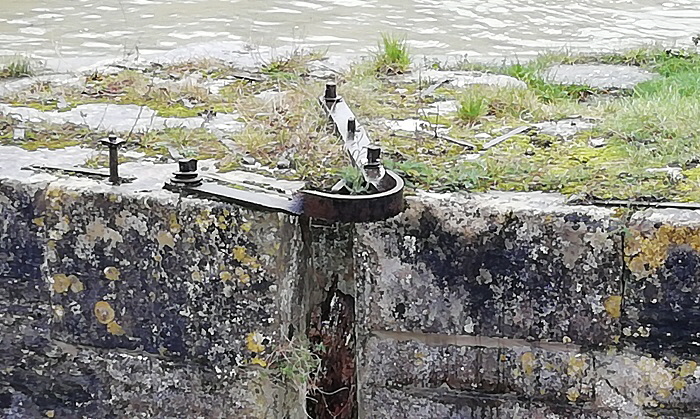
This shows the view from the lock of the river and road bridge below.
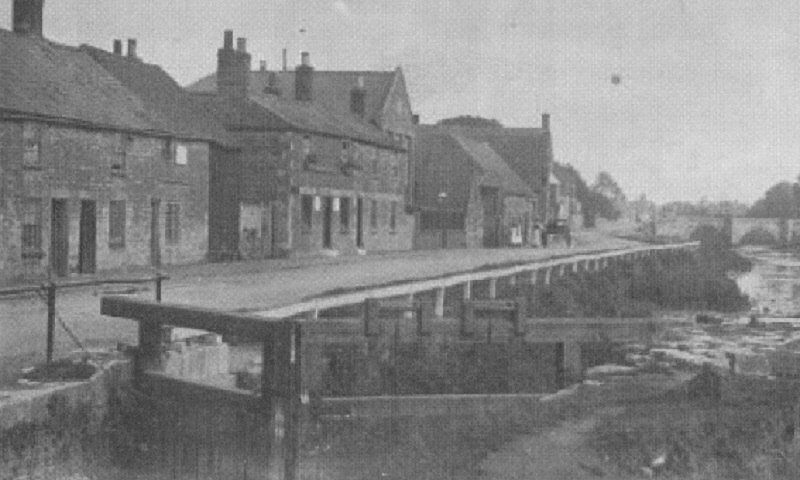
The metalwork shown above is holding up the lock gate on the right.
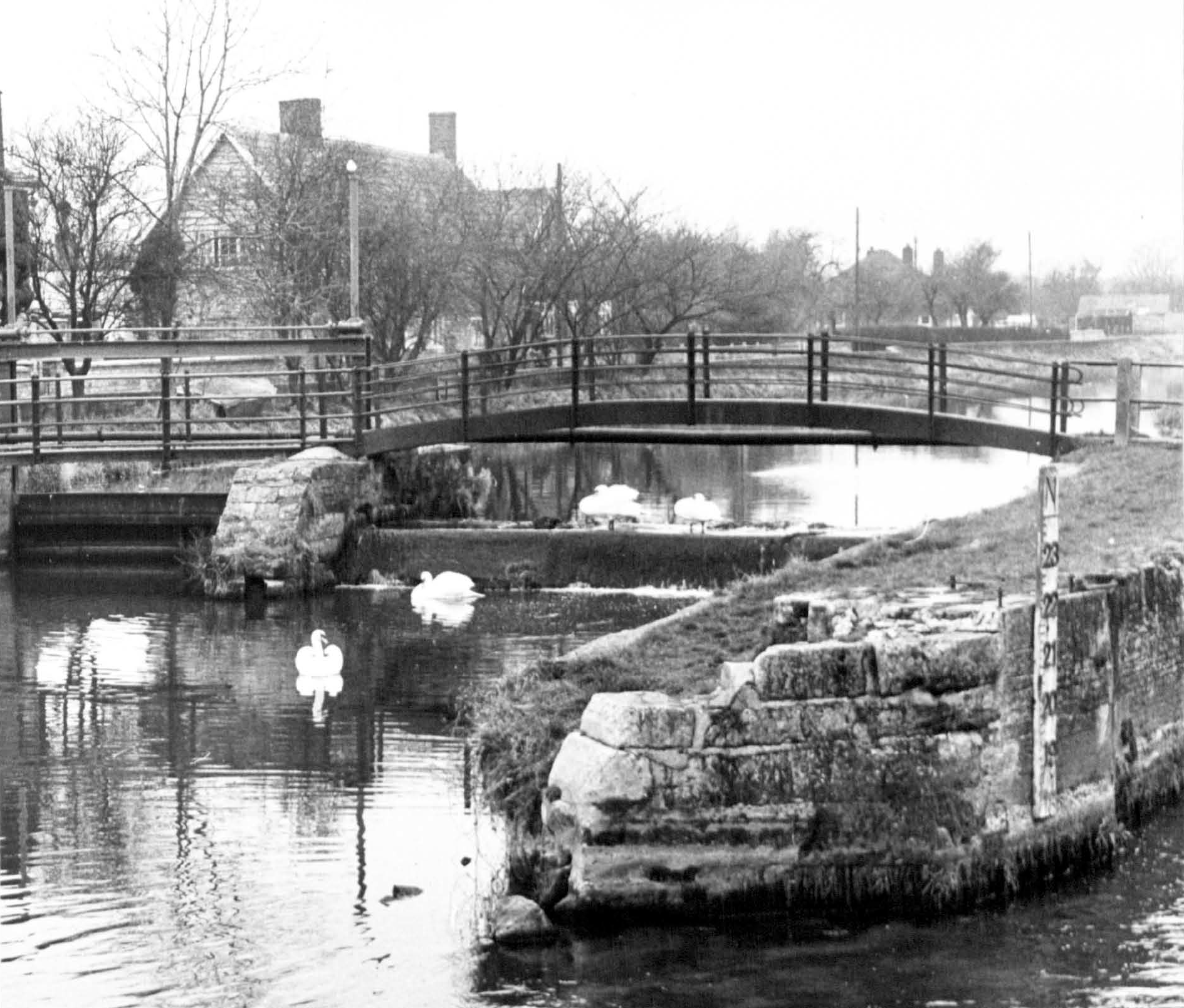
An early picture looking upstream
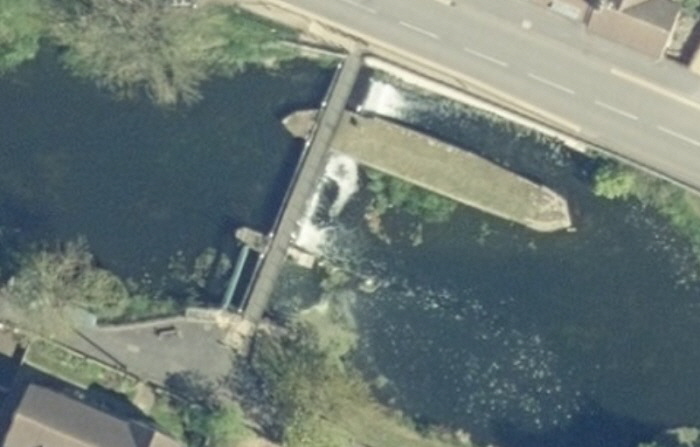
This satellite view clearly shows the Briggens lock pen and its relationship with the closeness of the road, the bridge and the weir.
For some reason this lock pen was much shorter than all the others!
< Back Lock 11, High Lock at Deeping St James
The Stamford Canal << The earliest proper canal in England? <<
